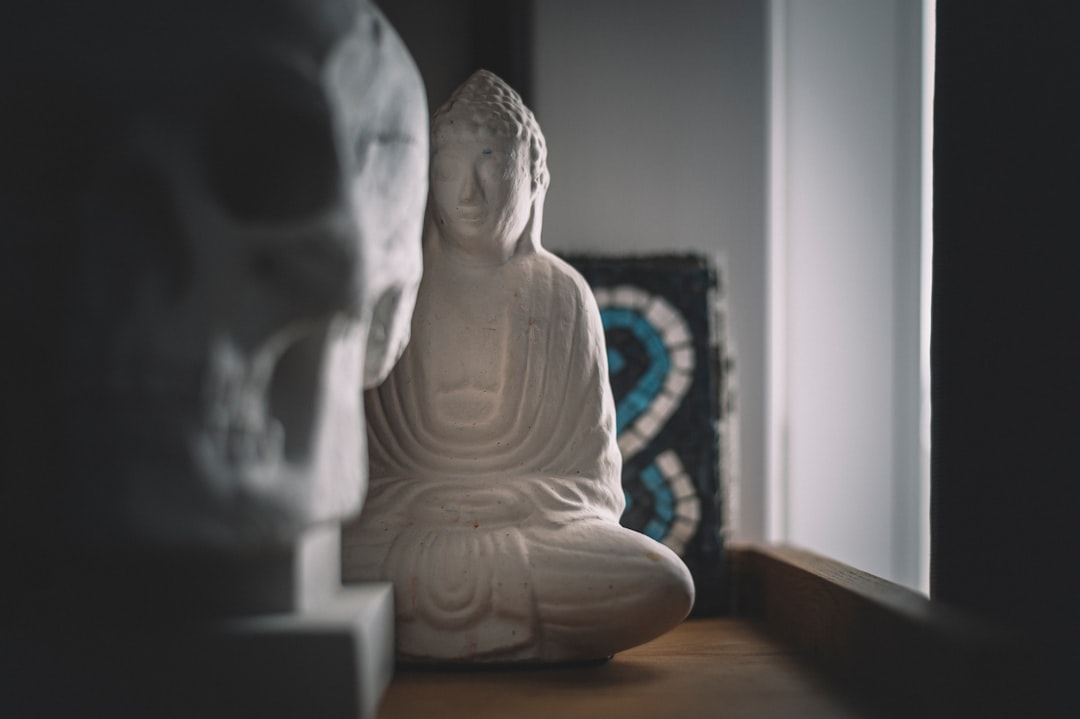I've heard more meditation myths in the past decade than I care to count. From friends insisting you need to sit cross-legged for hours to coworkers claiming meditation is just fancy daydreaming, these misconceptions keep people from experiencing the genuine benefits of practice. Let me share what I've learned through years of meditation and help separate the facts from fiction around these persistent myths.
The "Empty Mind" Myth
Perhaps the most damaging of all meditation myths is the belief that successful meditation means achieving a completely empty mind. I spent my first months of practice getting frustrated every time a thought appeared, thinking I was "doing it wrong." The truth is, thoughts arising during meditation isn't a bug—it's a feature.
Your mind naturally produces thoughts, just like your heart naturally beats. The goal isn't to stop thinking but to develop a different relationship with your thoughts. When you notice your mind wandering during mindfulness practice, that moment of awareness is actually the meditation working. You're training your attention, not eliminating thoughts entirely.
I've found that understanding this distinction transforms the entire practice. Instead of fighting thoughts, you learn to observe them with curiosity and gently return attention to your chosen focus, whether that's your breath, a mantra, or body sensations.
Position and Posture Misconceptions
Another stubborn myth suggests that meditation only "counts" if you're sitting in lotus position on a cushion. This rigid thinking has prevented countless people from starting a practice, especially those with physical limitations or discomfort sitting on the floor.
Effective meditation can happen in a chair, lying down, or even while walking. The key is finding a position that allows you to remain alert while being comfortable enough to sustain your practice. I've meditated in airplane seats, park benches, and yes, sometimes lying in bed when that's what my body needed.
What matters more than your physical position is your mental posture—approaching the practice with openness, patience, and gentle attention. Whether you're exploring meditation posture options or wondering about meditate lying down without asleep techniques, remember that accessibility should never be a barrier to practice.
Creating Your Own Meditation Space
Similarly, you don't need an elaborate meditation room or perfect silence to practice effectively. I've had meaningful sessions in noisy coffee shops and busy airports. While a dedicated space can be helpful, it's not essential for building a consistent practice.
Time Requirements and Duration Myths
The belief that meditation requires hours of daily practice keeps many people from starting altogether. I've encountered beginners who think they need to meditate for 30-60 minutes daily to see any benefits, which feels overwhelming when you're just beginning.
Research consistently shows that even brief sessions can produce measurable benefits. Starting with just 5-10 minutes daily is not only acceptable—it's often more sustainable than ambitious goals that lead to burnout. The question of how long should you meditate for depends entirely on your current capacity and lifestyle.
I've seen people transform their stress levels and emotional regulation with consistent 10-minute sessions far more effectively than others who meditate sporadically for longer periods. Consistency beats duration every time.
When exploring how often should you meditate, focus on what you can realistically maintain rather than what sounds impressive. A daily 5-minute practice builds more momentum than an hour-long session you can only manage once a week.
The Instant Results Expectation
Modern culture's obsession with quick fixes has spawned the myth that meditation should produce immediate, dramatic results. People expect to feel completely zen after their first session, then abandon the practice when they don't experience instant transformation.
Meditation is more like physical exercise than taking medication. You wouldn't expect to run a marathon after one jog, and similarly, meditation's benefits unfold gradually through consistent practice. Some effects, like temporary stress relief, might appear quickly, while deeper changes in emotional regulation and mental clarity develop over weeks and months.
I remember feeling discouraged after my first week of practice, wondering if meditation was "working" for me. It wasn't until I looked back after several months that I noticed significant changes in how I responded to stress and difficult emotions. The benefits of meditation often reveal themselves subtly at first.
Understanding Different Types of Progress
Progress in meditation isn't always linear or obvious. Some days your mind feels calm and focused, others it seems particularly chaotic. Both experiences are normal and valuable parts of the journey. Learning to work with difficult emotions and restless thoughts is just as important as enjoying peaceful sessions.
Religious and Spiritual Prerequisites
Many people avoid meditation because they believe it requires adopting specific spiritual beliefs or religious practices. This myth particularly affects those from different faith traditions or secular backgrounds who worry about conflicts with their existing beliefs.
While meditation has roots in various spiritual traditions, the techniques themselves are secular tools for training attention and awareness. You can practice mindfulness meditation while maintaining your current religious beliefs, or lack thereof, without any conflict.
The scientific study of meditation has clearly separated the techniques from their traditional contexts, showing that the cognitive and emotional benefits arise from the mental training itself, not from any particular belief system. Understanding what is mindfulness helps clarify this distinction between technique and tradition.
I've worked with practitioners from diverse backgrounds—Christians, Muslims, Jews, atheists, and agnostics—who all find value in meditation without compromising their existing worldviews. The practice enhances rather than replaces your current approach to life and meaning.
The Personality Type Myth
Perhaps one of the most limiting meditation myths is the belief that only certain personality types can meditate successfully. I've heard variations like "I'm too Type A," "My mind is too busy," or "I'm not spiritual enough" countless times.
The reality is that meditation benefits everyone, regardless of personality type or natural temperament. In fact, people who feel they're "too busy" or "too stressed" often experience the most dramatic improvements from regular practice. The skills meditation develops—attention, emotional regulation, stress resilience—are universally helpful.
Anxious people don't need to become naturally calm before meditating; they can use meditation to develop greater calm. Busy, achievement-oriented individuals don't need to change their fundamental nature; they can use meditation to become more effective and less reactive in their pursuits.
The practice adapts to you, not the other way around. Whether you're dealing with high-functioning anxiety or simply looking to enhance your focus, meditation offers tools that work with your existing personality rather than requiring you to become someone else.
Meditation for Different Challenges
Different approaches work better for different people and situations. Someone dealing with overthinking might benefit from focused attention practices, while those working with trauma might find body-based approaches more suitable. The key is finding what works for your unique circumstances.
Debunking the "Selfish Practice" Myth
Some people avoid meditation because they view it as self-indulgent or selfish, especially when facing external pressures and responsibilities. This myth suggests that taking time for inner development is somehow neglecting others or avoiding important work.
In my experience, the opposite is true. Regular meditation practice makes me more present and patient with family, more creative and focused at work, and better able to contribute meaningfully to my community. The skills you develop—emotional regulation, clear thinking, compassion—benefit everyone around you.
Think of meditation like the airplane safety instruction to put on your own oxygen mask first. You can't effectively help others if you're overwhelmed, reactive, or burned out. Taking time to develop mental clarity and emotional stability isn't selfish; it's responsible.
Many meditation practices, like loving-kindness meditation, specifically cultivate compassion and connection with others. The inner work often leads to more effective outer action, not less engagement with the world.
Moving Beyond the Myths
Understanding these meditation myths helps clear the path for authentic practice. Meditation isn't about achieving some perfect state of consciousness or conforming to specific images of what a "meditator" should look like. It's a practical training in awareness that meets you exactly where you are.
Whether you're interested in learn meditation on your own at home or exploring different types of meditation, remember that your practice is uniquely yours. The techniques are tools, not rules, and they work best when adapted to your life, schedule, and temperament.
The most important step is simply beginning, regardless of how imperfect your initial attempts might feel. Every moment of awareness, every gentle return of attention, every session where you show up despite not feeling like it—these are all victories worth celebrating. The myths dissolve naturally as you develop your own direct experience with practice, and that experience becomes your most reliable guide.







